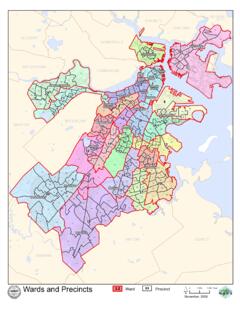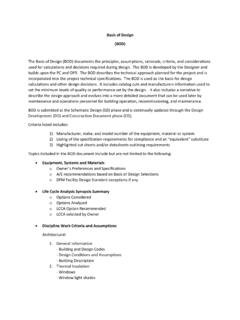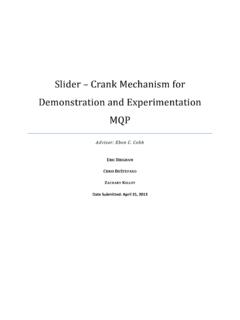Transcription of Cumbre Vieja Volcano -- Potential collapse and tsunami at ...
1 Cumbre Vieja Volcano -- Potential collapse and tsunami atLa Palma, Canary Islands Steven N. WardInstitute of Geophysics and Planetary Physics, University of California, Santa Cruz California, USAS imon DayBenfield Greig Hazard Research Centre, Department of Geological Sciences, University College, London, UKAbstract. Geological evidence suggests that during a futureeruption, Cumbre Vieja Volcano on the Island of La Palmamay experience a catastrophic failure of its west flank, drop-ping 150 to 500 km3 of rock into the sea. Using a geologicallyreasonable estimate of landslide motion, we model tsunamiwaves produced by such a collapse . Waves generated by therun-out of a 500 km3 (150 km3) slide block at 100 m/s couldtransit the entire Atlantic Basin and arrive on the coasts of theAmericas with 10-25 m (3-8 m) Lateral collapse of island volcanoes -- Atsunami wave sourceLateral collapses of oceanic island volcanoes rank amongstthe most spectacular natural events on Earth.
2 Although nosuch lateral collapse punctuates the historical past, residualdebris found on the seafloor evidence their abundance in re-cent geological time. Moore (1964) first identified the re-mains of lateral collapses off the flanks of Hawaii. Since then,dozens have been recognized adjacent to island volcanoes innearly every ocean (Moore et al. 1994; Keating and McGuire,2000). These observations constrain not only the geographyand frequency of lateral collapses, but also their magnitude(up to 5000 km3 of material), extent (to 300 km length) andferocity (underwater speeds to 140 m/s). tsunami list among the many hazards associated with lat-eral collapses. Admittedly, direct geological evidence of tsu-nami in identifiable deposits (Moore and Moore, 1984) orcoastal erosion features (Young and Bryant, 1992) are contro-versial.
3 Still, history has documented large and damagingtsunami from far smaller lateral collapses of stratovolcanoesin island arc environments (Johnson, 1987; Satake and Kato,2001). Prudence dictates that the lack of abundant wave-caused signatures associated with collapses of oceanic islandvolcanoes be viewed as more a function of scanty preservationthan evidence that these events do not produce from collapse tsunami may be particularly impor-tant in the Atlantic Ocean because of both the number of ac-tive oceanic islands there and the recent proposals (Day et al.,1999a, 1999b) that at least two of these volcanoes show signsof incipient instability. It seems timely then, for this paper toinvestigate the consequences of tsunami waves induced by acollapse of one of these unstable volcanoes -- Cumbre Viejaon the island of La Palma, Canary Islands (Figure 1).
4 2. Geological evidence for a future collapse ofthe Cumbre ViejaDuring most if not all of the past 125ka, Cumbre Vieja hasbeen the most active Volcano in the Canary Islands (Car-racedo et al., 1999). Subaerial Cumbre Vieja forms the south-ern third of the island of La Palma (Figure 2), rising 2 kmabove sea level with average slopes of 15 to 20 . The earlyHolocene has seen major changes in Cumbre Vieja . Day et al.(1999a) observe that, over the last several thousand years, thedistribution and orientation of vents and feeder dykes withinthe mountain have shifted from a triple rift system (typical ofmost oceanic island volcanoes) to one consisting of a singleN-S rift with westward extending vent arrays. They argue thatthese structural re-organizations are in response to evolvingstress patterns associated with the growth of a detachmentfault under the Volcano 's west flank.
5 Coincident with the mostrecent eruption of the Cumbre Vieja in 1949 (Bonelli Rubio,1950), the steeply inclined headwall section of this detach-ment surfaced as a west-dipping normal fault along the crestof the Volcano (see Figure 2). The scarp extended 4 km with amaximum offset of 4 m. The appearance of surface rupture isominous because: (1) initial subsurface development of adetachment fault, (2) its later propagation to the surface, and(3) ultimate slide block failure, typically sequences landslidedevelopment (Martel and Muller, 2000). Detailed examinationof the 1949 rupture and geodetic measurements in the period1994-1998 (Moss et al., 1999) indicate that the fault has beeninactive since 1949. Inactivity is not unexpected however,because the triggering of flank instability on steep volcanoesgenerally requires additional destabilizing influences such asdyke emplacement or pressurization of trapped groundwater(Elsworth and Voight, 1995).
6 These events often accompany avolcano's eruptive line of reasoning leads us to believe that a future erup-tion near the summit of the Cumbre Vieja will likely trigger aflank failure. To estimate the surface extent, subsurface ge-ometry and total volume of such a failure we turn to geologi-cal evidence and comparisons with existing lateral collapsescars. Because the breadth of the Holocene structural changesin Cumbre Vieja appears to have affected the entire subaerialedifice, Day et al. (1999a) conclude that the developing de-tachment now underlies most if not all of the western flank ofFigure 1. Inset. Canary Island chain off the western coast ofAfrica. Above. Location of La Palma Island, home to CumbreVieja Volcano . As evidenced by the abundant landslide de-posits strewn about their bases, the Canary Island volcanoeshave experienced at least a dozen major collapses in the pastseveral million AND DAY: LA PALMA collapse AND TSUANMI2the Volcano .
7 The unstable block above the detachment ex-tends to the north and south at least 15 km, however its lengthmay be greater as these edges lack surface expression. The1949 fault break skirts the crest of the Volcano about 8 kminland and it marks the eastern boundary of the presently un-stable zone. Because lateral collapses typically cut across thecrest of volcanoes and into their reverse slopes ( Mount , Voight et al., 1983), we place the head of the future LaPalma collapse 2 to 3 km east of the 1949 rupture (Figure 2).The western boundary of the unstable block lies hidden un-derwater. Bathymetric and imaging sonar surveys of oldercollapses at La Palma and elsewhere (Watts and Masson, 1995;Urgeles et. al., 1999) suggest that the toe of the block surfacesin 1 to 3 km water depth -- about 5 to 10 km best geological evidence that we have paints a CumbreVieja collapse sending down a slide block 15-20 km wide and15-25 km long.
8 The thickness of the slide block is not easilyfixed. Mapping the depth to the detachment surface by locat-ing earthquakes that occur on it has not been possible. Norecords exist of seismic activity associated with the 1949eruption, or the subsequent 1971 eruption at the island'ssouthern tip. No other tectonic earthquakes of consequencehave struck under La Palma in the last three decades , characteristics of past collapses point to a listricdetachment 2 to 3 km below the summit of the Volcano . To-ward the west, the surface dips seawards at a shallow angle tointersect the offshore toe. Toward the east, the detachmentsteepens sharply to intersect the surface within a few km of themountain's crest. In consideration of everything, we believethat a future flank failure of Cumbre Vieja Volcano will dis-lodge a broadly wedge-shaped slide block as cartooned at thebottom of Figure 2.
9 The volume and mean thickness of rockparticipating in a flank failure depends upon the detailedshape of the basal surface, but they should fall in the range of150 to 500 km3 and 1 to 2 km respectively. The inferred ge-ometry and volume of the expected failure coincide closelywith features of the previous La Palma collapse (~566 ka),remains of which are still visible to the north on CumbreNueva (Day et al., 1999a).3. Landslide tsunami Model - GeneralitiesThe section above provides a feeling for the size and shapeof the block that may slide into the sea during a lateral col-lapse of Cumbre Vieja . What magnitude of tsunami might thiscollapse induce? One straightforward means to address thisquestion employs classical, linear wave theory. Consider auniform ocean of depth h. Under this theory, a general verticalbottom disturbance ( the landslide) uzbot(r,t) starting at t=0stimulates surface tsunami waveforms (vertical component) atobservation point r of (Ward, 2001)uzsurf(r,t)=0 d k( ) 2 u( )cosh(k( )h)dr0A(t) J0(k( )r r0) dt0 u zbot(r0,t0)cos[ (t t0)]0t (1)In (1), k is wavenumber, is frequency ={gk( )tanh[k( )h]}1/2, dr0=dx0dy0, superscript = / t andJ0(x) is the cylindrical Bessel function of order zero.
10 The sec-ond integral covers area A(t) that includes all points r0 where u zbot(r0,t0) 0 for t0<t. Any number of strategies can be usedto evaluate (1) given a kinematic prescription of the landslideuzbot(r,t). Mostly, the strategies reduce to finding an efficientmeans to compute the three integrals and to adapting theequation to non-uniform depth oceans. One approach shinglesthe source with many, small simple slides. These are thenadded up in a number and combination needed to representadequately the spatial and temporal history of the entire land-slide. A simple slide element is rectangular, with length L andwidth W. On these elements, a landslide of constant thicknessT and step function time dependence, starts along one widthof the rectangle at rs=0 and ts=0, and runs down its length atslide velocity vr.













